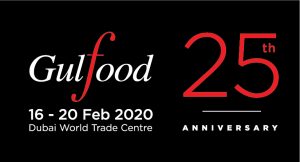 Gama spoke to Mark Napier, Show Director, Gulfood, ahead of the landmark 25th edition of the Middle East tradeshow.
Gama spoke to Mark Napier, Show Director, Gulfood, ahead of the landmark 25th edition of the Middle East tradeshow.
What are your expectations for this edition of Gulfood?
We anticipate this edition – which marks the 25th anniversary of Gulfood – being a hotbed of innovation reflecting the trends within an industry where demographic shifts such as urbanisation, migration, and the rise of the middle class are reshaping consumer lifestyles and purchasing decisions. All eight of Gulfood’s product sectors are in the midst of transformation and that is why this silver anniversary edition of the show has been themed “Rethinking Food”. All food industry supply chain players must rethink their approach in a landscape where natural ingredients, sugar reduction and free-from labels remain the F&B industry’s main priorities.
What should manufacturers and retailers do to be successful in the current economic climate?
Innovation is key to meet ever-changing and increasingly sophisticated consumer demand, while choice, affordability and a focus on sustainability will give forward-thinking manufacturers a competitive advantage. This involves new flavour creation, enhancing shelf life, demonstrating ethical production methods and ingredient provenance and reducing production and distribution costs.
In addition, all sectors will become subjected to increased regulation, particularly from a labelling aspect. People are now demanding healthier food choices and greater transparency in ingredient disclosure. The industry is also going to have to deal with increasing interest in food waste issues and a growing momentum for more eco-friendly packaging, including a growing anti-plastic movement.
How is the food and drink sector in the United Arab Emirates and wider Middle East region evolving?
There are increasingly higher rates of local production, and exporting, from a region which, for many years, was totally import reliant. Within the health and wellbeing packaged food sector alone, growth of 9.9 per cent is forecast until 2023 for the Middle East and North Africa. This forecast is revealed in the latest Gulfood Global Industry Outlook Report available to show attendees. The forecasts are partly driven by global trends, including expansion of the middle class who, with higher disposable incomes, are likely to buy health and wellness products that are priced higher than conventional packaged food.
What key trends do you expect to shape food & drinks innovation in 2020?
There are many trends that demonstrate the scale of the challenges, and opportunities facing the industry. The trends are driven by greater conscious consumerism. Consumers will prioritise their health and the health of the planet. Look out for more transparent labelling, increasing concentration on health & wellbeing, ethical ingredient sourcing, more environmentally friendly packaging. There will be growing demand for fortified dairy and plant-based produce and alternative protein sources, for clean convenience foods, more creative flavours and for organic and locally sourced food. The push-back against sugar and salt will increase as will demand for free-from produce. E-retailing will also gain ground.
About Gulfood
Gulfood, the world’s largest annual food & beverage trade show, spans more than 1 million sq ft of exhibition space, and each year welcomes over 98,000 attendees from 193 countries. In 2020, the event (16th to 20th February) will be celebrating its 25th anniversary under the theme of “Rethinking Food”. More than 5,000 exhibitors will be showcasing products across eight primary market sectors in 120 country pavilions.


